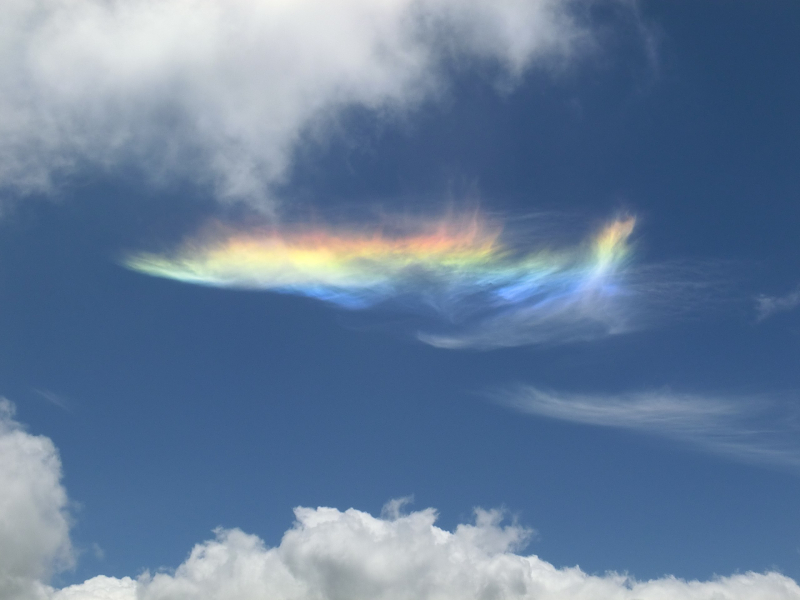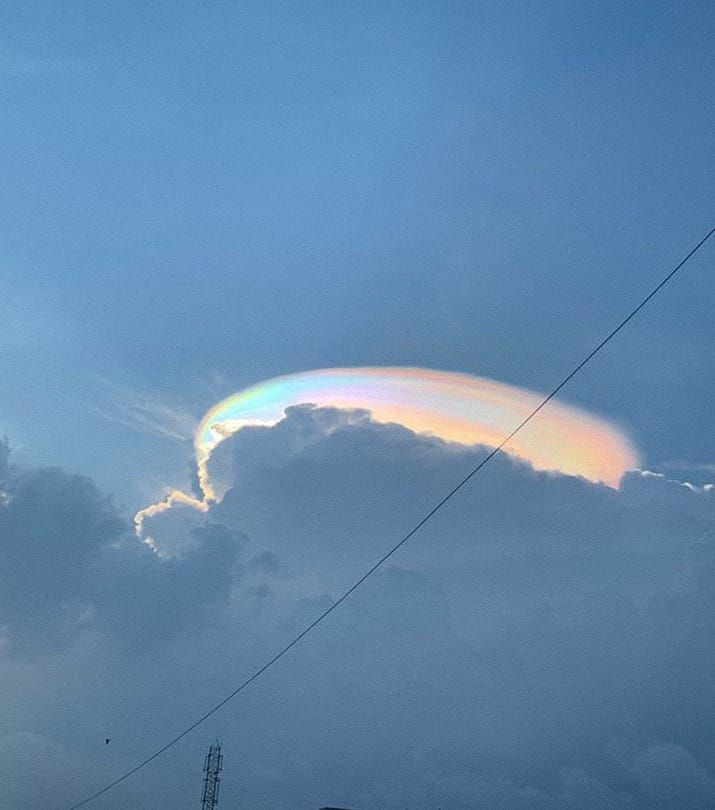Circumhorizontal arc
A circumhorizontal arc is a type of ice halo generated by the refraction of sunlight or moonlight in plate-shaped ice crystals suspended in the sky, most commonly in cirrus or cirrostratus clouds. The arc appears in its entire form as a broad, vividly colored band (red being the uppermost color) extending parallel to the horizon, far below the sun or moon. The arc is twice as far away from the sun or moon as the standard 22-degree halo. Only parts of the arc are visible when the halo-forming cloud is tiny or patchy. As with other halos, it can be caused by both the sun and the moon.
The circumhorizontal arc is also known as the circumhorizontal arc or the lower symmetric 46° plate arc. The false phrase "fire rainbow" is occasionally used to describe this event, despite the fact that it is neither a rainbow nor related to fire in any way. The term, which was supposedly coined in 2006, may have originated from the arc's appearance as "flames" in the sky when it occurs in fractured cirrus clouds.







